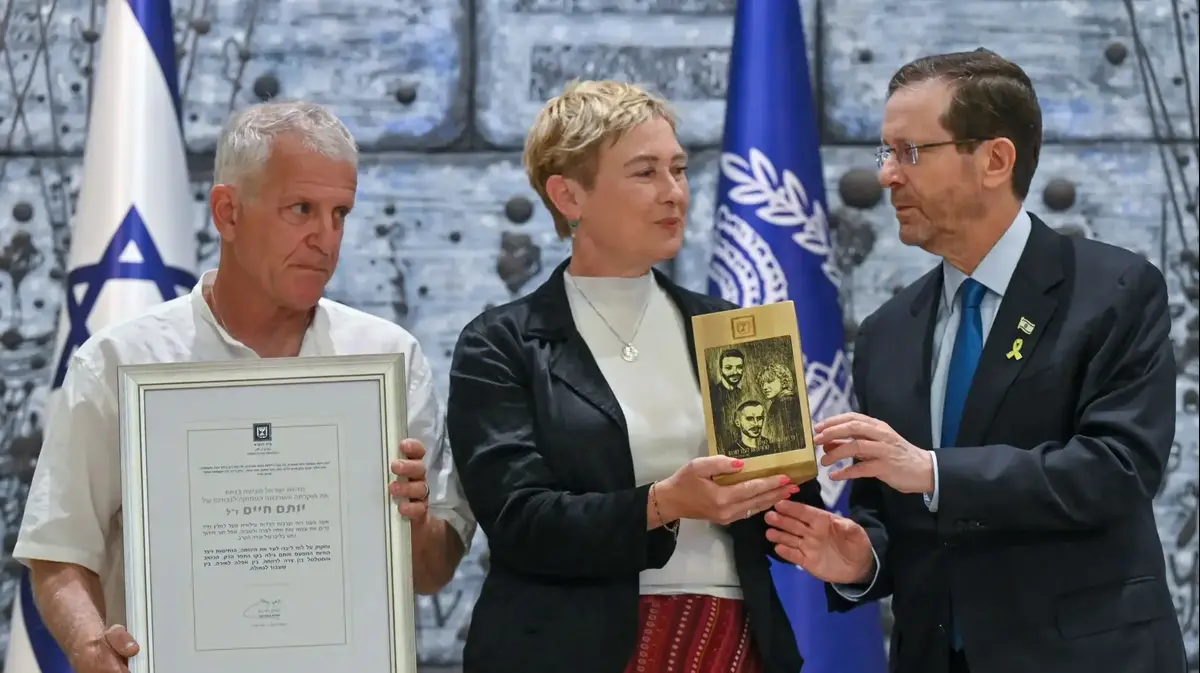For three years, the Nazis created Leningrad • The frozen and starved residents, of which hundreds of thousands died, ate tree leaves to survive • The Putin family was among the survivors • Now a monument to the heroic story of Russian residents and soldiers was inaugurated in Jerusalem
Putin in Jerusalem // Photo: EPA
After many years on Thursday, Russian President Vladimir Putin came to visit Israel. The main reason is the International Holocaust Forum that took place in the city, but in fact there was another important reason: the inauguration of a monument to the heroes of Leningrad (now St. Petersburg) in the Sucker Garden in the capital. It is one of the greatest civilian and military heroics stories of World War II, and the greatest civilian tragedy ever to occur.
Putin and Netanyahu at ceremony at the Sucker Garden // Photo: Amos Ben Gershom, GPO
Founded by the great Tsar Peter in 1703, the city is Russia's gateway to the Scandinavian countries and Finland, and has for many years been the capital of the entire Russian empire. Therefore, the city was of paramount strategic, political and military importance.
This was known to the German porter Adolf Hitler. He ordered his military commanders not to accept the surrender of the city, but to be thoroughly destroyed, as part of the German invasion of Russia in Operation Barbarossa. At the same time, the municipal communist workers' council, which ruled the site at the time, decided to fortify the city and prevent its fall.
In defense of the shields stood the huge fortifications prepared by the great Tsar Peter and his heirs over the centuries, which added to the assistance of all the citizens of the city 190 km of wooden obstacles, 635 km of barbed wire, 700 km of anti-tank excavations, 5,000 light fortifications and bunkers And 25,000 miles of excavations.
The German army was stopped at the entrance to the city, but it succeeded in almost completely crowning it. For 872 days, the German-Finnish blockade continued around the city, with the Russians only a fine line of supplies through Lake Doga. This supply was also difficult to pass, as the German army used to bomb the lake all year round, and during the winter the water was freezing, and it was challenging to transport trucks through it.
The result was a severe famine, which resulted in the deaths of between 750,000 and a million and a half people during the siege. The controversy over the number of fatalities stems, among other things, from the devastation and lack of documentation of the situation in the city, the difficult battles that took place in and around it.
Battle of Leningrad // Photo: AP
For almost three years the heavy blockade continued. Some of the time, the city's inhabitants ate the tree leaves, and later began to grow vegetables in parks and stadiums to enable the provision of internal food. However, the vegetable growers did their job when exposed to the German fire and subject to immediate danger of death. Residents would also dive into a fishing lake in order to control the inherent supply of the sinking ships.
The cold in the city, which is in a northern area, was unbearable and fell below zero in the winter, which posed a huge challenge, as there was no oil or coal supply in the city, and of course - no electricity. In order to cope with the freezing cold, the youth cut down all the trees of the city and the forests in the environment in unimaginable frost conditions in order to survive.
In January 1943, the operation began to liberate the besieged city - Operation Spark. The Red Army scored while fighting the German fortifications in the southern lake for fishing hard, and within six days managed to open a land corridor to the city. However, only a year later, in January 1944, the Soviets completely expelled the Germans and Finns from the area, thus ending the siege of the city completely.
Leningrad in the early 20th century // Photo: sputnik
Leningrad was at the end of the war between the first Soviet cities to win the title of "heroine city", with the Soviet state miraculously demanded the heroism of the city's defenders. The title was officially awarded to the city a decade after the war, in 1965.
And Putin? Putin's family was among the besieged Leningrad residents, and one of his brothers was even killed as a result of famine during the severe siege. Therefore, besides the fact that the Russian president wants to restore Russia to its greatness, partly through monuments, it also has a particularly personal and tragic touch to one of modern Russia's founding events.













